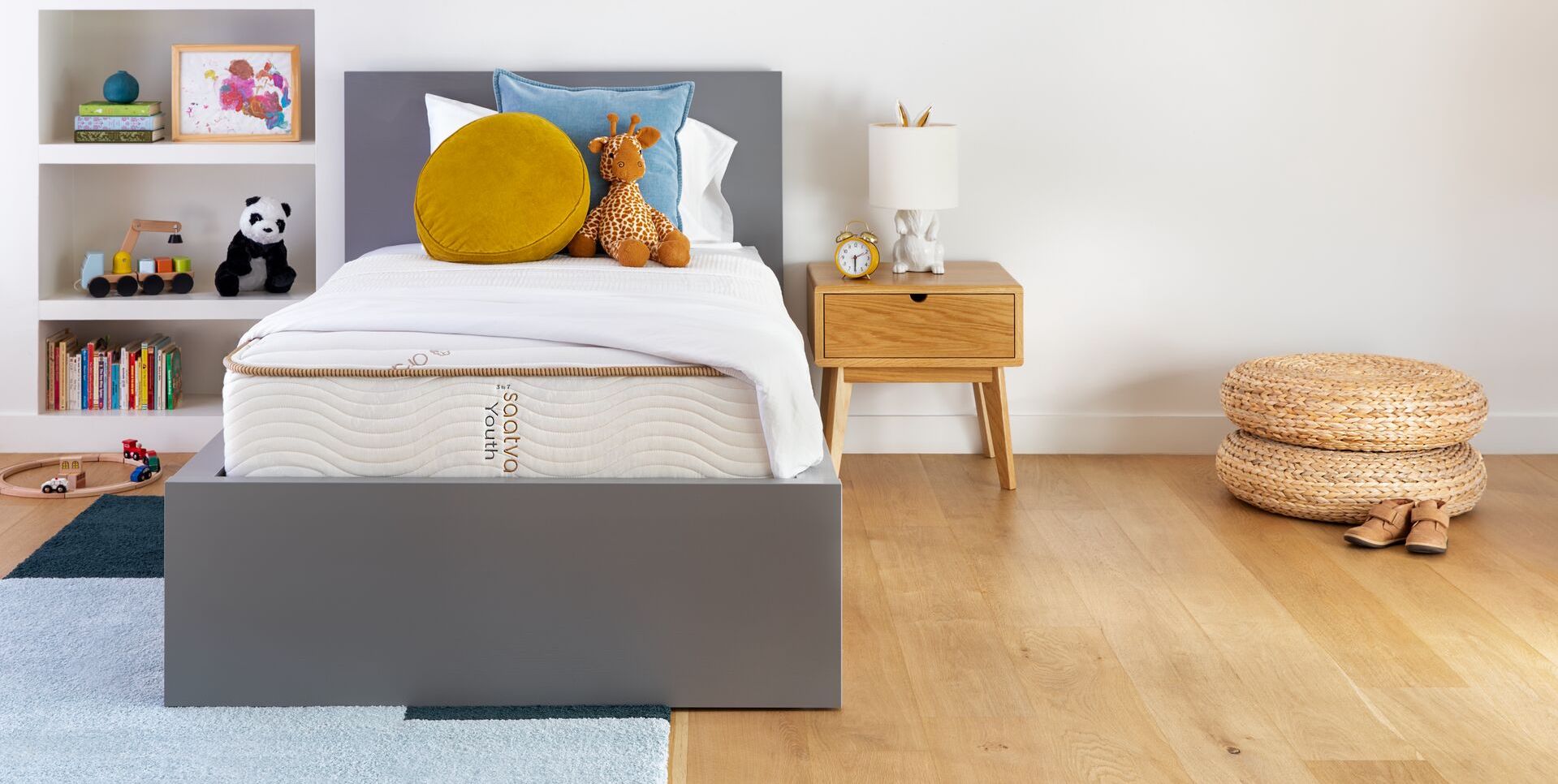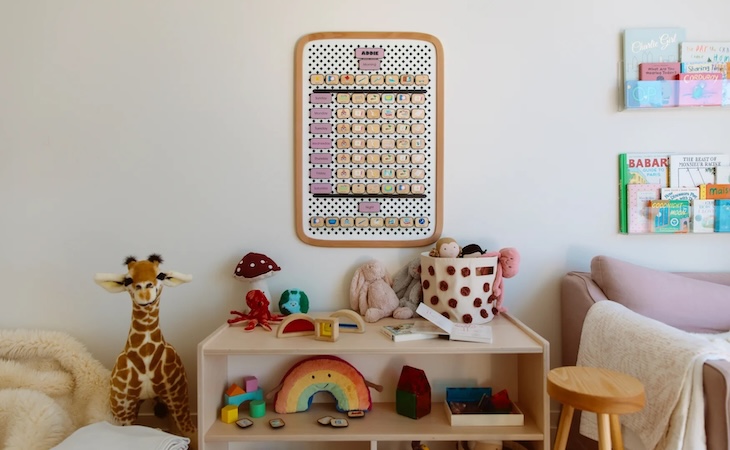Lynelle Schneeberg, PsyD, understands the difficulties parents face when it comes to getting their kids to bed. The pediatric sleep psychologist, assistant professor at Yale School of Medicine, and director of the behavioral sleep program at Connecticut Children’s Medical Center has spent much of her career specializing in the sleep needs of children. She’s also the mom of three adult children ages 19, 22, and 24, so she’s had plenty of opportunities to put her work into practice at home. Now Schneeberg is sharing her best advice in a new book, Become Your Child’s Sleep Coach: The Bedtime Doctor’s 5-Step Guide, Ages 3-10.
We chatted with Schneeberg about what parents can expect to find in her book and how to put some of her sleep tips to good use.
Q: What inspired you to write this book—and what was that process like?
It started with a dinner table conversation. I came home one night and was sitting with my husband and three kids, and I said, “You know, I’ve developed these five steps to help parents in the sleep clinic make their bedtime routines quicker and simpler and better, and I keep designing bedtime plans for them with these same five steps. I think I could teach parents how to do this.” And my husband said, “Well, I think that must mean there’s a book in there.”
I thought the book was a good idea because a) sleep coaches are in short supply, and b) they can be really expensive—not everybody can afford one. So I wrote up a draft based on the five steps and sent it to a literary agent in New York City. Then I needed to flesh out the concept so I went back to the family dinner table for advice.
My husband said, “You come home every night and tell stories about the families you help—why don’t you put some of those stories in the book?” I thought that was brilliant—people would see themselves in these other families. A large portion of the book is called “Stories of How Real Kids Learned to Be Great Sleepers,” with all identifying details changed, of course. I added other chapters, too, about common pediatric sleep problems, like sleepwalking, how to help kids on the autism spectrum sleep well, and the many benefits of sleep training.
Q: What are the five steps you outline in your book?
Step one is preparing your child’s bedroom for great sleep. I walk you through what to remove and what to add. Step two is using the 5B bedtime routine every night—that’s to keep the routine consistent. The five Bs are bedtime bite, bath, brushing teeth, bathroom, and books. Step three is teaching your child to self-comfort as you work your way out of the room. Step four is limiting callbacks and curtain calls. Those are just what they sound like—kids love to call you back for “one more thing” or show up in the living room long past when you thought they were asleep. And step five is managing night and early wakings because, while you’re working on bedtimes, your toddler is still going to wake up at night or wake up too early—and you have to plan for that.
Q: What are some of the most common issues you hear about from parents?
There are two that I hear of more than any other. The first one is: “My child fell asleep so easily at bedtime, so why do they wake up so much at night?” Almost always it’s because the parent is providing a lot of assistance at bedtime to fall asleep, and then they leave the bedroom. Everyone wakes up four to six times a night, usually at the end of a sleep cycle. But when a child wakes up and the thing they had with them at bedtime is missing, they have to come find it—or her or him—again to get back to sleep. In lay language, that’s sometimes called a sleep crutch. In technical language, it’s called a sleep-onset association. In the simplest terms, it’s usually called mom or dad.
The second most common thing I hear is: “We tried everything to help our kid become a great sleeper. Why isn’t it working?” Then they’ll usually give me a list of amazing and lovely things they’ve added to their child’s bedroom—aromatherapy, a machine that projects stars onto the ceiling, a special night light, a weighted blanket—but these aren’t the items that are going to help their child sleep. Parents keep purchasing things and adding them to the bedroom, hoping that will fix the problem—when in reality, the problem is almost always the fact that the parent is providing too much assistance.
Q: What should parents do instead?
The solution is to teach the child in a gentle way, over time, how to fall asleep independently. This is called sleep training. It’s much trickier to sleep train an older kid than a baby. The advice for babies is pretty straightforward: Put a well-fed, happy, dry child into the crib and be nearby, but let them figure out how to settle themselves for the final journey into sleep. That’s much harder when you’re talking about a four-year-old, for example, because they can come running out of the room, call you back, and tell you all sorts of things they need before they can go to sleep—which leads to very long and complicated routines.
For an older child, it’s important to have a consistent routine with only a few steps. Then you will want to make sure that the child has a reading light and a book. That could be a picture book or a drawing pad, depending on how old the child is. Then you can say to the child, “Hey, I love you and we just had some great time together during your bedtime routine but now it’s your bedtime, so just look at your book or draw until you’re sleepy.” That takes the pressure off having to fall asleep on command, which none of us can do. In my book, I try to mirror the child version of what an adult already does. An adult already gets into bed and looks at something—hopefully a book and not a tablet or a phone—until they’re drowsy enough to fall asleep.
If a parent has been staying with a child for a long time to help him or her fall asleep—this may have been years for some of the families I work with—I’ll do a gradual taper, moving the parent further and further away over time until they don’t have to be there anymore as the child falls asleep.
“…when a child wakes up and the thing they had with them at bedtime is missing, they have to come find it—or her or him—again to get back to sleep. In lay language, that’s sometimes called a sleep crutch. In technical language, it’s called a sleep-onset association. In the simplest terms, it’s usually called mom or dad.”
Q: How should a parent set up their child’s bedroom?
It’s usually not about the color of the walls in the bedroom or the fanciness of the pillow. Keep it simple. Set up a reading light and leave out a book. There are a few items to keep out of the bedroom, too, including electronics. I think parents should have house rules—which I outline in my book—for electronics. These include turning off all devices one hour before bedtime and making them unavailable in the morning until a certain time so there’s no reward for waking up and going to find a parent’s phone early in the morning.
Parents should also avoid having anything that could turn on or off later in the night in a child’s bedroom, such as lights or music. Can you imagine if a light turned on or off in your bedroom at night after you had fallen asleep? You would almost certainly wake up. Pets should be kept out of a child’s bedroom as well since they can be unpredictable; a child may grow to depend on them at bedtime but they may not stay put.
Q: What unique sleep needs do children on the spectrum have?
Kids on the spectrum thrive on routine. Some children on the spectrum sleep less than what we refer to as a neurotypical child, so sometimes parents have to match the sleep schedule of the child on the spectrum to their own sleep schedule. Let’s say a child on the spectrum only sleeps eight hours a night instead of the usual 10 or 11—if they fall asleep at 8 p.m., that means they’re going to wake up at 4 a.m., and that’s a terrible time for parents.
So I might suggest, “Why don’t you try to have their sleep schedule fall from 10 p.m. to 6 a.m. so that it more closely matches yours?” Even though 10 p.m. might feel like a bedtime that’s too late, it might not be for a child on the spectrum. Having said that, some kids on the spectrum are sleeping less because of the problems we already talked about—like sleep crutches that involve a parent and lots of extra requests after the routine was supposed to be over. Those should be sorted out first so you know how much sleep the child is capable of getting.
Q: With the school year in full swing, what’s the best way to get kids into a routine?
I usually tell parents two things: First, focus on the rise time. Bedtime’s important, but rise time is even more important. Get your kids up at the same time seven days a week. Whatever time they have to get up for school, keep that the same over the weekend—otherwise you could slip back into the summer rise times, and your rise time sets your bedtime if you think about it.
Then, in the morning, there are three things that set the clock in your brain: activity, sunlight, and food. So parents should give their children breakfast, get them moving, and get them outdoors. That helps to “entrain” the new schedule.





